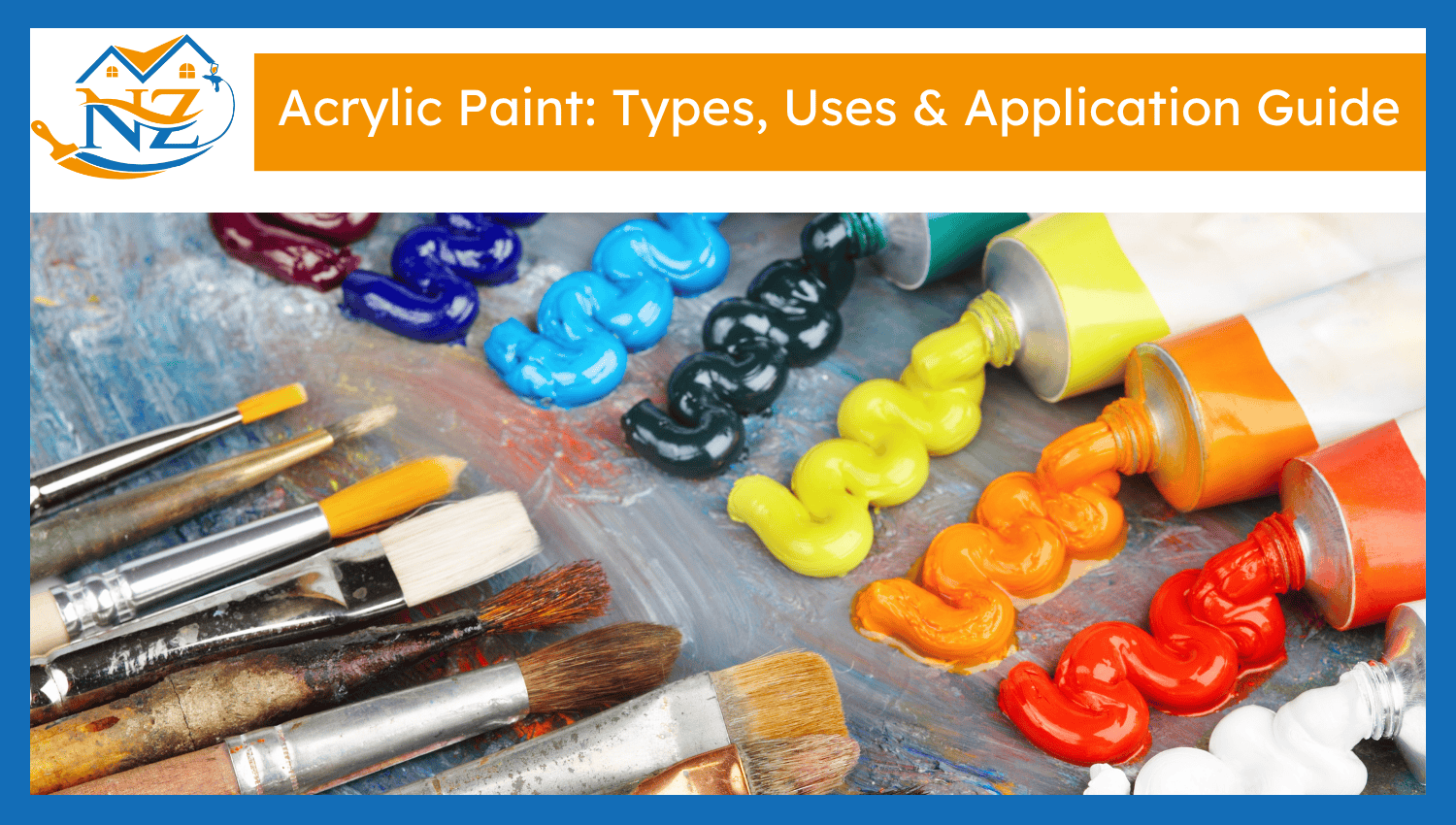

Acrylic paint is a fast-drying, versatile, and low-odor paint with a textured finish. It is a synthetic product made of pigment suspended in an acrylic polymer emulsion and stabilizers. Unlike oil-based paint, which requires turpentine solvents, acrylic paints can be thinned with water. Although it is water-soluble, once the water evaporates, the pigments and binders come together to create a water-resistant layer. German chemist Otto Röhm first created this paint for industrial use in the 20th century. Later in the 1950s, it gained popularity among artists due to its versatility and ease of use. It is widely used in art, craft, models, decor, and industrial projects.
Here are the key properties of Acrylic paint:
| Property | Description |
|---|---|
| Base | Water-based |
| Finish | Matte, satin, or glossy (adjustable with mediums) |
| Drying Time | Fast-drying (typically 5 to 30 minutes) |
| Adhesion | Excellent on most surfaces (canvas, wood, plastic, metal, fabric, etc.) |
| Color Retention | High — colors remain vibrant over time |
| Flexibility | Dries to a flexible film, resists cracking |
| Layering Ability | Allows easy layering without lifting previous coats |
| Cleanup | Easy cleanup with soap and water while wet |
| Toxicity | Low odor and low VOC; generally non-toxic |
| Water Resistance | Water-resistant when dry |
| Compatibility | Works with a wide range of mediums and additives |
| UV Resistance | Good, especially with artist-grade or UV-resistant formulations |
| Durability | Good for indoor use; needs sealing for outdoor or heavy-use areas |
There are seven types of acrylic paint:
These differ in lightfastness, binder, and concentration. Student grade paints have less pigment and more bulking agents that fade away within a short time. Artist-grade acrylics are highly pigmented with better performance and vibrant colors.. They do not contain fillers, which makes them expensive to purchase compared to student-grade paints.
Heavy body acrylics are thick with creamy consistency. Unlike standard acrylics, they can be applied without being thinned. It is suitable for texture-rich techniques and brushstroke visibility. They are formulated without any fillers, extenders, or opacifiers for a pure and vibrant look.
Soft body acrylics are thinner than heavy body paints. They have smooth and fluid consistency, which makes them best for blending, detailing, and layering work. Like heavy body acrylics, they do not hold the brush strokes and peaks.
Fluid acrylics are smooth and flexible water-based paints with a free-flowing consistency. They are highly pigmented, which makes them ideal for pouring, staining, and fine detail work. Many artists use these colors to obtain oil-like effects. These high-flow acrylics don’t need to be thinned before application.
Acrylic ink has ultra-fluid consistency with intense pigment and the longest lifespan among all inks. It is water resistant and doesn’t smudge after drying. Artists use it for textural work, such as illustrations and calligraphy.
Open acrylics are softer in consistency and require hours for drying. Unlike traditional acrylics that dry quickly, it allows wet-on-wet blending for smooth transitions.OPEN Acrylics can be used for traditional printmaking techniques like gelli plate, copper plate, and monoprinting.
Atelier Interactive Acrylics are highly pigmented with buttery consistency. They can be reactivated after application and provide sufficient time to blend. It can be used to hold peaks and add depth in three-dimensional paintings.
Here are the five common uses of acrylic paints:
Here are a few limitations of acrylic paints:
Here are the best acrylic paint color options:
| Color | Visual Appeal | Common Uses |
|---|---|---|
| Titanium White | Bright, clean, opaque | Highlights, mixing, base layers, abstract art |
| Mars Black | Deep, neutral, dense | Outlines, shading, dramatic contrast |
| Cobalt Blue | Rich, cool, intense | Skies, water, modern art |
| Ultramarine Blue | Warm, deep, slightly purplish | Landscapes, shadows, traditional painting |
| Cadmium Red | Bold, warm, powerful | Flowers, portraits, pop art |
| Alizarin Crimson | Deep, wine red | Skin tones, shadows, fine art |
| Cadmium Yellow | Bright, energetic, opaque | Sunshine, accents, abstract highlights |
| Yellow Ochre | Earthy, warm, muted | Natural tones, landscapes, rustic themes |
| Burnt Sienna | Reddish-brown, earthy | Skin tones, nature, old wood finishes |
| Burnt Umber | Dark brown, warm | Deep shadows, wood, backgrounds |
| Raw Sienna | Golden brown, lighter than burnt sienna | Underpainting, skin tones, sand or earth scenes |
| Phthalo Green | Strong, cool, jewel-toned | Tropical foliage, surrealism, fantasy art |
| Sap Green | Natural, mid-green | Trees, fields, organic scenes |
| Payne’s Grey | Blue-grey, cool, moody | Shadows, night skies, monochrome work |
| Magenta | Vibrant, bold, modern | Pop art, floral, abstract design |
| Turquoise | Bright, cool, fresh | Ocean scenes, boho art, accents |
| Purple/Violet | Royal, mysterious, intense | Florals, fantasy, spiritual or mystical works |
Here is the step-by-step guide to using acrylic paints: